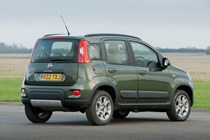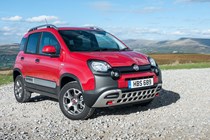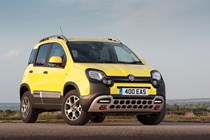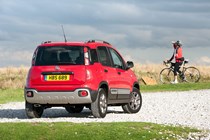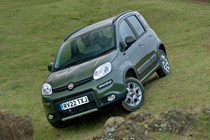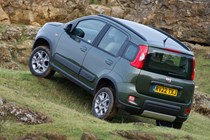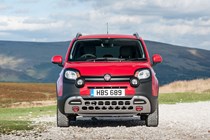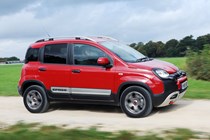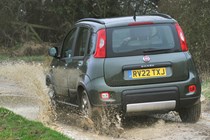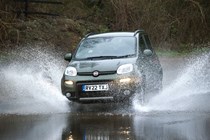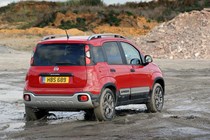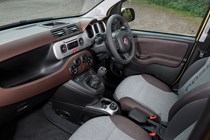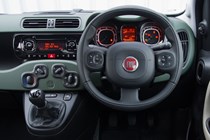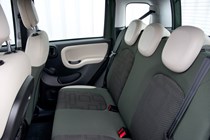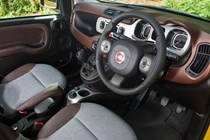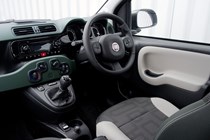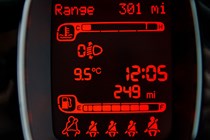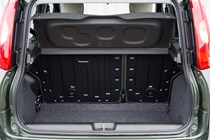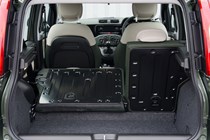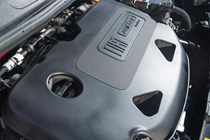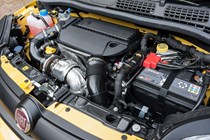
Fiat Panda 4x4 (2012-2023) engines, drive and performance

- Choice of a petrol or diesel engine
- No hybrid, electric or plug-in options
- Pleasant to drive with decent performance
Petrol engines
The entry-level engine in the Panda 4x4 range is an 85hp 875cc petrol called the TwinAir. It’s got just two cylinders, as the name suggests, but it is turbocharged. In the 4x4, it’s coupled to a six-speed manual gearbox which has a low first-gear ratio, which makes off-road driving and hill starts easier.
You might expect a two-cylinder engine in a car with all-wheel drive to feel a bit pedestrian and, on paper, that appears to be the case: it has a 0-62mph time of 12.1 seconds and can reach a top speed of 103mph. But, out on the road, it’s a pleasingly eager and flexible, thanks in part to its 145Nm of pulling power.
The TwinAir doesn’t even feel stressed or sound noisy on the motorway and, if you’re prepared to work it, it can even be quite fun. Later versions got a fractional bump in power, but the performance is much the same.
Don’t use the ‘Eco’ mode feature in any case, as it blunts the TwinAir’s performance heavily in a bid to save fuel. The saving’s don’t appear that great and the feature transforms the Panda from swift to sluggish.
Diesel engines
The Panda 4x4 is also available with a 1.3-litre four-cylinder diesel called the MultiJet 2. It produces 75hp and 190Nm of torque, and it allows the Panda to accelerate from 0-62mph in 14.5 seconds and reach 99mph.
A five-speed manual gearbox is standard in diesel Pandas. While the engine offers more pulling power than the TwinAir, you’ll still need to row up and down the gears to extricate the best performance from it.
The diesel engine is a bit more relaxed and conventional than the TwinAir, though, so it’s worth considering if you’re thinking about more regular long-distance trips. Like the TwinAir, later versions also benefited from a slight but practical unnoticeable bump in power – which is why you might see some slight discrepancy in the quoted figures in places.
If you’re really digging through the details, you might also find it useful to know that the diesel version of the Panda 4x4 has 16cm of ground clearance, while the TwinAir has a fractionally lesser 15cm of ground clearance.
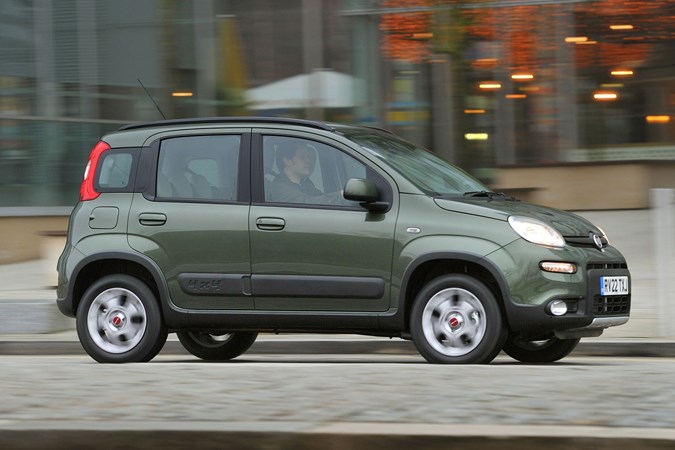
What’s it like to drive?
- Excels off-road and around town
- Good handling and ride comfort
- Dull steering quells the outright fun
The Panda 4x4 is a bit more cumbersome in the corners than the normal Panda, primarily because of its taller stance. It never feels wayward, though, and it’ll tackle bends far more eagerly than you might expect.
The Fiat’s controls are all light and easy to judge, too, but what lets it down in the engagement stakes is its numb steering. The ‘City’ mode does make the steering lighter when you need it, though, which makes the Panda even easier to park.
Altogether, the Panda 4x4 is a reasonable car to drive on the road, and far better than the likes of the Suzuki Jimny. But if you don’t need its all-wheel-drive capability or ground clearance, regular hatchbacks such as the Hyundai i10 and Suzuki Swift are better to drive. Many also still have a decent amount of ground clearance and, with a set of appropriate tyres, they might better fit your bill.
If you are regularly heading off the beaten track, though, the Panda 4x4 will excel. It handles rough terrain, ruts, inclines and sharp bends with ease, helped in part by its light weight. There are upgrades out there for them, too, allowing them to handle even more punishment if required.



